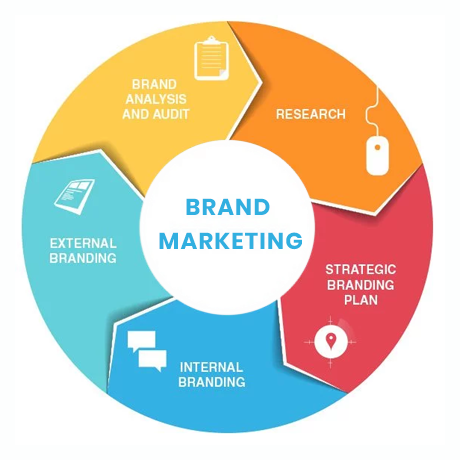
How Marketing Companies Create Strategies for Brand Blogs in 2025
In 2025, content marketing remains a central pillar of brand strategy, but the methods marketing companies use to create blog strategies have evolved. As digital channels become more competitive and consumer behavior shifts, brands must adapt their blogging strategies to engage audiences in meaningful ways, improve SEO rankings, and ultimately drive conversions. With the advancement of artificial intelligence (AI), voice search, personalization, and changing social media dynamics, marketing companies are crafting brand blog strategies that are more innovative, data-driven, and tailored to the needs of modern consumers. Here’s a closer look at how marketing companies make strategies for brand blogs in 2025.
1. Understanding the Audience with Data Analytics
In 2025, a successful brand blog strategy starts with a deep understanding of the audience. Marketing companies rely on data analytics to gain insights into customer behavior, preferences, and interests. This data informs the content creation process, ensuring that the blog resonates with the target audience.
-
Behavioral Data Analysis: Marketing companies track website analytics, such as time spent on pages, bounce rates, and conversion rates, to identify which topics, blog posts, and content formats are the most engaging. They analyze trends from social media engagement, comments, and shares to determine what captures attention.
-
Customer Personas: Marketers refine customer personas based on demographic data, interests, and purchase history. This helps them understand the pain points, motivations, and buying behaviors of their audience, allowing for more targeted and relevant blog content.
-
Sentiment Analysis: AI-driven tools are used to gauge customer sentiment, helping marketers identify how audiences feel about certain topics or products. This feedback is crucial for shaping blog content that speaks to customer needs and emotions.
By leveraging data insights, marketing companies can craft blog posts that directly address their audience’s interests and concerns, improving engagement and loyalty.
2. SEO Strategy: Optimizing for Search Engines and User Experience
SEO remains a critical part of brand blogging in 2025, but the approach has become more sophisticated. Marketing companies are no longer just focusing on keyword optimization; they’re considering a broader range of factors that impact SEO rankings and the user experience.
-
Search Intent and User-Centered Content: In 2025, SEO is all about understanding the intent behind the search query. Marketing companies analyze what users are truly looking for when they search for a specific keyword or phrase. Instead of merely targeting keywords, the focus is on creating content that answers the user’s question or solves their problem. For instance, if someone searches for "best Italian restaurant in New York," the blog post needs to provide detailed, useful information about the restaurant, menu, ambiance, and more.
-
Topic Clusters and Pillar Pages: Marketing companies are organizing blog content into “topic clusters,” with pillar pages acting as comprehensive guides on a subject. This content hub approach not only improves SEO but also helps visitors navigate the website more easily. Linking related blog posts to the pillar page boosts internal linking and overall SEO authority.
-
Voice Search Optimization: As voice search continues to rise, blogs are being optimized for more conversational, long-tail keywords. Marketing companies anticipate how people phrase questions when using voice-activated devices and ensure their content aligns with these natural queries.
-
Core Web Vitals and Page Experience: Google’s focus on user experience (UX) means that brands must prioritize site performance, such as fast loading times, mobile responsiveness, and smooth navigation. Marketing companies ensure that their blogs meet Core Web Vitals standards, which are vital for ranking in search results.
By crafting SEO-optimized, user-centric content, marketing companies improve visibility on search engines while delivering valuable experiences for users.
3. Leveraging AI and Automation for Content Creation
AI and automation tools are transforming how marketing companies approach content creation and strategy. These tools can assist in various aspects of blogging, from generating ideas to optimizing content.
-
AI-Powered Content Creation: AI tools like ChatGPT, Jasper, and Copy.ai are being used to generate ideas, draft blog posts, and even optimize existing content. These tools analyze vast amounts of data to identify the types of content that are most likely to perform well based on search trends, competition, and user preferences. While human creativity and editing are still necessary, AI accelerates the content creation process and ensures that the content aligns with SEO best practices.
-
Personalized Content Recommendations: Marketing companies use AI to deliver personalized content recommendations based on a visitor’s previous interactions with the brand. For example, a blog reader who has previously read content about healthy eating might be recommended additional blog posts on nutrition tips or healthy recipes, increasing the likelihood of engagement and conversions.
-
Automation for Publishing and Distribution: Automation tools streamline the publishing and distribution process. Marketing companies use tools like HubSpot, Buffer, and Hootsuite to schedule blog posts, share them across social media platforms, and measure performance in real-time. Automation helps brands maintain consistent publishing schedules and engage with their audience more efficiently.
By incorporating AI and automation into their content strategies, marketing companies can scale their blogging efforts while maintaining high quality and relevance.
4. Content Personalization: Speaking Directly to the Audience
In 2025, personalization is not just a trend; it’s a requirement for brands looking to stand out. Marketing companies are using data and advanced targeting techniques to create hyper-personalized blog content that speaks directly to the needs and preferences of individual users.
-
Dynamic Content: Blogs are becoming more dynamic, with personalized elements like location-based recommendations, custom product suggestions, and localized content. For example, if a brand has multiple locations, the blog might display content relevant to the reader’s nearest location (e.g., events or promotions specific to that city).
-
Segmented Email Campaigns: Marketing companies create email campaigns that direct users to specific blog posts based on their past interactions. By sending tailored email content, such as offering a blog post on a specific topic the user has shown interest in, brands can increase engagement and drive more traffic to their blogs.
-
Interactive Content: Interactive elements like polls, quizzes, and surveys are being integrated into blog posts to engage users in a more personalized way. By encouraging visitors to participate, brands can gather more data about their audience while making the content more engaging.
Personalization increases the relevance of a brand's blog, leading to higher engagement rates, longer time spent on site, and better conversion outcomes.
5. Social Media Integration: Amplifying Reach and Engagement
Social media continues to play a major role in brand blogging strategies. Marketing companies use social media platforms to amplify blog content and drive traffic to brand websites.
-
Shareable Blog Content: Marketing companies focus on creating blog posts that are highly shareable. By crafting content that resonates with their audience, whether through storytelling, humor, or visual appeal, brands can encourage readers to share their blog posts on platforms like Facebook, Twitter, and LinkedIn.
-
Visual and Interactive Elements: Visual content, such as infographics, videos, and interactive elements like polls, is becoming more prevalent in blog posts. These types of content perform well on social media platforms and help increase the likelihood that blog posts will be shared and discussed.
-
Influencer Collaboration: Some brands partner with influencers or micro-influencers to amplify their blog content. Influencers can share blog posts with their followers, driving additional traffic and increasing the blog’s visibility.
By strategically leveraging social media, marketing companies can extend the reach of their blog content and create a larger online presence for their brand.
6. Analyzing Performance and Iterating Strategies
Finally, an essential part of any successful blog strategy is continuous monitoring and iteration. Marketing companies use a variety of tools to track the performance of blog posts, including Google Analytics, SEMrush, and social media insights.
-
Performance Metrics: They measure key metrics like page views, bounce rates, time on page, social shares, and conversions. These metrics help marketers determine which blog topics, formats, and keywords are working and which need improvement.
-
A/B Testing: Marketing companies regularly perform A/B testing on headlines, CTAs, and content layouts to identify which elements lead to the highest engagement and conversions.
-
Content Refresh: To keep content relevant, marketing companies frequently update old blog posts to include the latest information, optimize for new keywords, and improve SEO. Refreshing older content can also boost its performance and help it rank higher in search results.
Conclusion
In 2025, marketing companies are adopting an integrated, data-driven approach to brand blogging. By leveraging advanced technologies like AI, focusing on SEO and personalization, and utilizing analytics to optimize performance, they create content that not only ranks well but also builds stronger relationships with their target audience. Through continuous iteration and a deep understanding of audience behavior, marketing companies are ensuring that brand blogs remain a powerful tool for driving engagement, building brand loyalty, and increasing conversions.



Leave a Reply